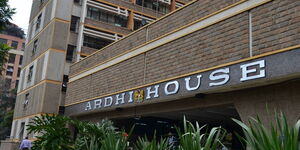The Central Bank of Kenya (CBK) has announced that it is permanently shutting down Imperial Bank Limited and all its branches.
In a statement dated Thursday, December 9, the financial regulator indicated that liquidation of the institution was the only feasible option.
The decision comes after the Kenya Deposit Insurance Corporation (KDIC) submitted a receivership report to CBK recommending for the liquidation of the troubled bank.
CBK further indicated that it had assessed the report and determined that liquidation would best protect the bank's customers and its creditors.
"On December 7, 2021, KDIC submitted the Receivership Report to CBK recommending that IBL be liquidated. The report indicates that considering the weak status of IBL financial position, liquidation is the only feasible option.
"CBK has assessed the recommendations by KDIC, the external auditor's report, other pertinent information and considered that liquidation would facilitate the orderly resolution of IBL-IR in accordance with the Laws of Kenya, to protect the interest of IBL-IR depositors, its creditors and the wider public interest," read the statement in part.
Liquidation involves permanently shutting down a bank and all its branches and selling off its assets and using the money to settle its liabilities.
Trouble at the bank began in 2015 when CBK appointed KDIC as the receiver of the bank over bad loans and fraudulent activities.
In 2020, Kenya Commercial Bank acquired some assets from the bank valued at Ksh3.2 billion, with part of the proceeds being paid to some depositors for five years until 2020. The settlement represented 37.3 per cent of total deposits refunded.
How Depositors and Credits can Claim Their Money
CBK, in its statement, revealed that depositors and other individuals with claims can contact the bank through dedicated phone numbers or send an email to customerservice@kdic.go.ke
In general, KDIC is mandated to provide insurance cover for deposit accounts up to a maximum of Ksh500,000 per depositor of a member institution. Where a depositor has more than one account in an institution, all the accounts are consolidated and paid up to a maximum insured sum of Ksh500,000.
To make claims, depositors are required to fill a proof of debt claim form which can be accessed from the KDIC website.
The duration of settlements is usually two years from the date of commencement of the payment.
All claimants are expected to attach a copy of ID or Passport, account statement, if any, Original Fixed Deposit Receipt, a passbook or cheque book or ATM card and any other proof of claim for individual claimants.
For companies, a copy of certificate of incorporation, a Letter of Authority to make the claim signed by the authorized signatories as per the mandates held by the institution, original Fixed Deposit Receipt in case of a time/fixed deposit, a passbook or cheque book or ATM card and any other proof of claim are required.












